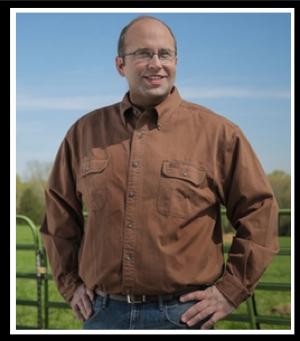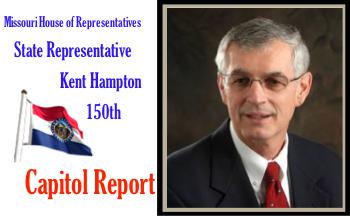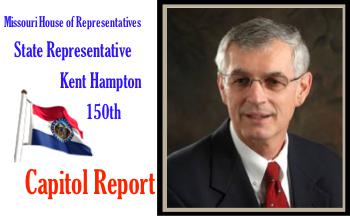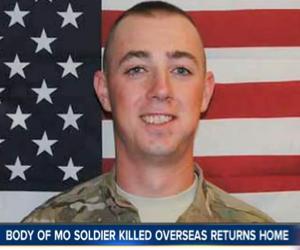
Submitted by
Dee Loflin, SMT Manager/Editor
The United States Capitol Building
On this day in 1793, George Washington lays the cornerstone to the United States Capitol building, the home of the legislative branch of American government. The building would take nearly a century to complete, as architects came and went, the British set fire to it and it was called into use during the Civil War. Today, the Capitol building, with its famous cast-iron dome and important collection of American art, is part of the Capitol Complex, which includes six Congressional office buildings and three Library of Congress buildings, all developed in the 19th and 20th centuries.
As a young nation, the United States had no permanent capital, and Congress met in eight different cities, including Baltimore, New York and Philadelphia, before 1791. In 1790, Congress passed the Residence Act, which gave President Washington the power to select a permanent home for the federal government. The following year, he chose what would become the District of Columbia from land provided by Maryland. Washington picked three commissioners to oversee the capital city's development and they in turn chose French engineer Pierre Charles L'Enfant to come up with the design. However, L'Enfant clashed with the commissioners and was fired in 1792. A design competition was then held, with a Scotsman named William Thornton submitting the winning entry for the Capitol building. In September 1793, Washington laid the Capitol's cornerstone and the lengthy construction process, which would involve a line of project managers and architects, got under way.
In 1800, Congress moved into the Capitol's north wing. In 1807, the House of Representatives moved into the building's south wing, which was finished in 1811. During the War of 1812, the British invaded Washington, D.C., and set fire to the Capitol on August 24, 1814. A rainstorm saved the building from total destruction. Congress met in nearby temporary quarters from 1815 to 1819. In the early 1850s, work began to expand the Capitol to accommodate the growing number of Congressmen. In 1861, construction was temporarily halted while the Capitol was used by Union troops as a hospital and barracks. Following the war, expansions and modern upgrades to the building continued into the next century.
Today, the Capitol, which is visited by 3 million to 5 million people each year, has 540 rooms and covers a ground area of about four acres.
Historic Veto Session Comes to a Close
While it lasted only a day, the 2013 veto session was truly historic as the legislature shattered the previous mark for overrides of the governor’s vetoes. Coming into the session the legislature had 29 vetoed bills to consider. After the dust settled late Wednesday night, the House and Senate had collaborated to override 10 of the governor’s vetoes.
Veto sessions have different meanings to citizens and legislators. We are mandated by the Missouri Constitution to meet annually for a veto session. To some it is an opportunity to inform the public of the merit of the bills, and question or identify issues that the bill possesses through messaging and choosing to either override a veto or sustain the existing veto. Others, however, may view it as being along party lines regardless of the subject matter or the voice of their constituents. I stand strong in my beliefs and will continue to put people before party.
See ya in Church Sunday!
As always, it is an honor to serve you in the Missouri House. If you would like to discuss any issue, please call 573-751-3629. You can also email me at kent.hampton@house.mo.gov . I look forward to hearing from you.

Submitted by
Dee Loflin, SMT Manager/Writer
Poplar Bluff, Missouri - On Monday, September 16th, Congressman Jason Smith will open a district office in Poplar Bluff. Smith will be on hand to officially open the office and to meet with his constituents. Smith hopes his Poplar Bluff office will allow him to be closer to his constituents and to ultimately represent the Eighth District more effectively in Washington, D.C.
“We are excited about opening an office in Poplar Bluff. Poplar Bluff is one of the fastest growing communities in our Eighth Congressional District and having a district office there shows my commitment to the area,” said Smith. “To my knowledge, this is the very first time Poplar Bluff has had an office for their federal representative. I want to invite the entire community to join us on Monday for the office opening.”
State Senator Doug Libla, praised Smith’s decision to open an office in Poplar Bluff.
“Poplar Bluff is one of the fastest growing and exciting communities in Southeast Missouri. It makes sense to have a congressional office in our town, and will give citizens direct access to Congressman Smith’s office. I’m happy that Congressman Smith recognizes that Poplar Bluff has been a leader in maintaining, plus attracting new businesses and families, to the region.” said Libla.
State Representative Todd Richardson also welcomed news of Smith opening an office in Poplar Bluff.
“I'm excited to see Congressman Smith open an office here in Poplar Bluff. I know Congressman Smith is passionate about serving the people of this area and has a strong commitment to this part of the 8th district. This office is an indication of that commitment and will serve the people of this area well,” said Richardson.
WHO: Congressman Jason Smith
WHAT: Opening of Poplar Bluff District Office
WHERE: 2911 North Westwood Blvd., Suite C, Poplar Bluff, MO
WHEN: Monday, September 16, 2013 from 10:00AM-11:00AM

Submitted by
Dee Loflin, SMT Manager/Writer
REMEMBERING 9/11:
This week’s capitol report contains two events in history that indirectly they tie together. The underlying message is stand strong in your values and take pride in being identified as a citizen of the United States of America. A freedom a heavy price was paid.
Twelve years is a long time. Long enough for the national trauma to lose some meaning. So, like I now do every year, I want to take a moment to remember, really remember. I hope you will do the same; take some time. Remember the sounds, the images, the smells, and the feeling of the fall of 2001.
If you don’t take time to remember, you forget.
Memory needs attention. It is “active,” “dynamic,” “creative.” Human memories don’t sit static in our minds. We make our memories. We don’t find them. In fact, we make memories, re-make them, and re-re-make them in an ongoing process (it’s called living). What we do with today’s twelfth anniversary becomes part of tomorrow’s memory. What we do today will help create how the thirteenth anniversary will feel. It helps create what 9/11 will mean to us and to all those who were not around on that day.
Memory also smoothes the rough edges. It makes the story fit the current moment. For the lucky majority, traumatic events get sanded down by subsequent events. Consider how memories of Memorial Day, a day for all those who have died in our nation’s service, have become nothing more than mirror smooth recollections of last year’s BBQ. But I don’t just want to remember THAT 9/11 happened. I want to remember how it felt, what it meant to us.
Taking time to remember is the only way not to forget. And we need to remember—especially now—that this happened to all of us. It happened to values we all cherish. It happened to our “indivisible” nation “with liberty and justice for all,” a nation that has become destructively divided with shrinking supplies of both liberty and justice. Politics, party, and ideology have replaced patriotism. It has killed basic neighborliness. We need to take time to remember that 9/11 happened to all of us.
So, take some time to remember 12 years ago. Maybe reach out to the people with whom you spent the day. And then take those memories you make and use them as fuel for some old-fashioned American religious tolerance, inclusiveness, and political honesty: with liberty and justice for all. And continue to pray that this nation returns to being “one nation under God.”
On this day in 1814, Francis Scott Key pens a poem which is later set to music and in 1931 becomes America's national anthem, "The Star-Spangled Banner." The poem, originally titled "The Defence of Fort McHenry," was written after Key witnessed the Maryland fort being bombarded by the British during the War of 1812. Key was inspired by the sight of a lone U.S. flag still flying over Fort McHenry at daybreak, as reflected in the now-famous words of the "Star-Spangled Banner": "And the rocket's red glare, the bombs bursting in air, Gave proof through the night that our flag was still there."
Francis Scott Key was born on August 1, 1779, at Terra Rubra, his family's estate in Frederick County (now Carroll County), Maryland. He became a successful lawyer in Maryland and Washington, D.C., and was later appointed U.S. attorney for the District of Columbia.
On June 18, 1812, America declared war on Great Britain after a series of trade disagreements. In August 1814, British troops invaded Washington, D.C., and burned the White House, Capitol Building and Library of Congress. Their next target was Baltimore.
After one of Key's friends, Dr. William Beanes, was taken prisoner by the British, Key went to Baltimore, located the ship where Beanes was being held and negotiated his release. However, Key and Beanes weren't allowed to leave until after the British bombardment of Fort McHenry. Key watched the bombing campaign unfold from aboard a ship located about eight miles away. After a day, the British were unable to destroy the fort and gave up. Key was relieved to see the American flag still flying over Fort McHenry and quickly penned a few lines in tribute to what he had witnessed.
The poem was printed in newspapers and eventually set to the music of a popular English drinking tune called "To Anacreon in Heaven" by composer John Stafford Smith. People began referring to the song as "The Star-Spangled Banner" and in 1916 President Woodrow Wilson announced that it should be played at all official events. It was adopted as the national anthem on March 3, 1931.
Francis Scott Key died of pleurisy on January 11, 1843. Today, the flag that flew over Fort McHenry in 1914 is housed at the Smithsonian Institution’s Museum of American History in Washington, D.C.
See ya in Church Sunday!
As always, it is an honor to serve you in the Missouri House. If you would like to discuss any issue, please call 573-751-3629. You can also email me at kent.hampton@house.mo.gov . I look forward to hearing from you.

Submitted by
Dee Loflin, SMT Manager/Writer
United States Nicknamed Uncle Sam
On September 7th, 1813, the United States gets its nickname, Uncle Sam. The name is linked to Samuel Wilson, a meat packer from Troy, New York, who supplied barrels of beef to the United States Army during the War of 1812. Wilson (1766-1854) stamped the barrels with "U.S." for United States, but soldiers began referring to the grub as "Uncle Sam's." The local newspaper picked up on the story and Uncle Sam eventually gained widespread acceptance as the nickname for the U.S. federal government.
In the late 1860s and 1870s, political cartoonist Thomas Nast (1840-1902) began popularizing the image of Uncle Sam. Nast continued to evolve the image, eventually giving Sam the white beard and stars-and-stripes suit that are associated with the character today. The German-born Nast was also credited with creating the modern image of Santa Claus as well as coming up with the donkey as a symbol for the Democratic Party and the elephant as a symbol for the Republicans. Nast also famously lampooned the corruption of New York City's Tammany Hall in his editorial cartoons and was, in part, responsible for the downfall of Tammany leader William Tweed.
Perhaps the most famous image of Uncle Sam was created by artist James Montgomery Flagg (1877-1960). In Flagg's version, Uncle Sam wears a tall top hat and blue jacket and is pointing straight ahead at the viewer. During World War I, this portrait of Sam with the words "I Want You For The U.S. Army" was used as a recruiting poster. The image, which became immensely popular, was first used on the cover of Leslie's Weekly in July 1916 with the title "What Are You Doing for Preparedness?" The poster was widely distributed and has subsequently been re-used numerous times with different captions.
In September 1961, the U.S. Congress recognized Samuel Wilson as "the progenitor of America's national symbol of Uncle Sam." Wilson died at age 88 in 1854, and was buried next to his wife Betsey Mann in the Oakwood Cemetery in Troy, New York, the town that calls itself "The Home of Uncle Sam."
By the time you read this the Labor Day holiday will have passed. School reunions, family reunions and many vacations will have taken place. I hope you not only took the time to enjoy, but also appreciated the value of these relationships. Dove season opens September 1st with the sounds of “pop, pop, pop”. Enjoy and continue to be careful while relishing this popular sport. See ya church Sunday!!!
As always, it is an honor to serve you in the Missouri House. If you would like to discuss any issue, please call 573-751-3629. You can also email me at kent.hampton@house.mo.gov . I look forward to hearing from you.

Submitted by
Dee Loflin, SMT Manager/Writer
Jefferson City, Missouri - Gov. Jay Nixon has ordered that the U.S. and Missouri flags at state buildings in all 114 counties and the City of St. Louis be flown at half-staff on Thursday, Sept. 5.
This all to honor the bravery and sacrifice of Private First Class Jonathon M.D. Hostetter. Private First Class Hostetter, age 20, of Humphreys, was a soldier in the United States Army serving in support of Operation Enduring Freedom in Afghanistan.
He died on Aug. 23 while serving his country in Wardak Province, Afghanistan; his funeral will be held on Sept. 5.
In addition, Gov. Nixon has ordered that the U.S. and Missouri flags at all state buildings in Sullivan County be flown at half-staff from Sept. 6 to Sept. 11.
"Private First Class Hostetter served our country with bravery and dedication as a soldier in the United States Army, and I ask all Missourians to remember his sacrifice when they see the lowered flags," Gov. Nixon said. "Our thoughts and prayers are with his family as they mourn."
Private First Class Hostetter was assigned to the 40th Engineer Company, 2nd Engineer Battalion, 36thEngineer Brigade, White Sands Missile Range, New Mexico. His awards and decorations include the Bronze Star Medal, Purple Heart, Army Good Conduct Medal, National Defense Service Medal, Afghanistan Campaign Medal with Bronze Service Star, Global War on Terrorism Service Medal, Army Service Ribbon, Overseas Service Ribbon, NATO Medal, Meritorious Unit Commendation, Combat Action Badge, Combat and Special Skill Badge Basic Marksmanship Qualification Badge (Bar, Weapon: Rifle (Inscription: Rifle), Expert), and the Overseas Service Bar.

